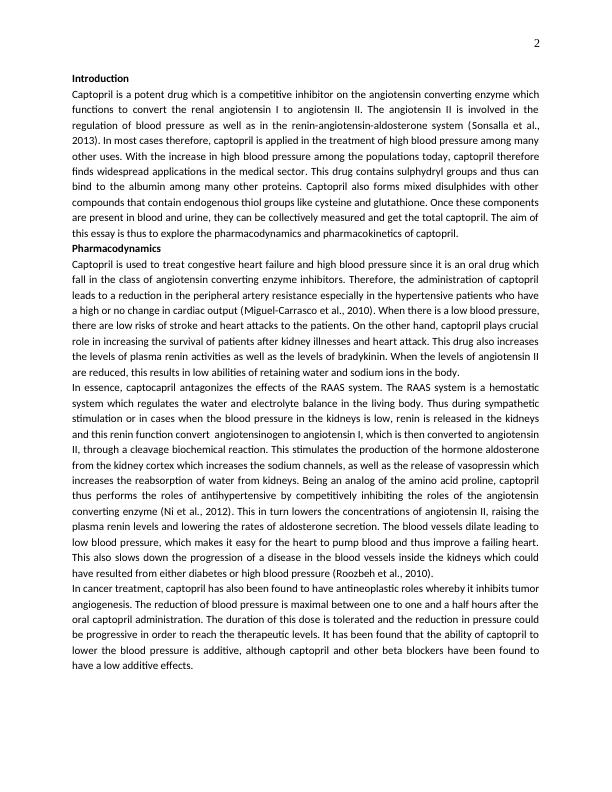Captopril: a potent drug which is a competitive inhibitor on the angiotensin converting enzyme
5 Pages1792 Words195 Views
Added on 2021-06-17
About This Document
The angiotensin II is involved in the regulation of blood pressure as well as in the renin-angiotensin-aldosterone system (Sonsalla et al., 2013). Thus during sympathetic stimulation or in cases when the blood pressure in the kidneys is low, renin is released in the kidneys and this renin function convert angiotensinogen to angiotensin I, which is then converted to angiotensin II, through a cleavage biochemical reaction
Captopril: a potent drug which is a competitive inhibitor on the angiotensin converting enzyme
Added on 2021-06-17
ShareRelated Documents
End of preview
Want to access all the pages? Upload your documents or become a member.
Role of RAAS in Cardiovascular System | Essay
|5
|1258
|25
Angiotensin-Converting Enzyme: Mechanism, Application, and Side Effects
|10
|2581
|66
Anti-Hypertensive Drugs: Ramipril and its Mechanism of Action
|12
|3283
|46
Nursing Care and Management Essay
|7
|2121
|125
Neuroscience & Biobehavioral Reviews
|13
|2755
|14
Heart failure pathophysiology Assignment 2022
|21
|3620
|6


